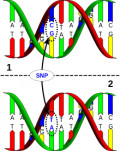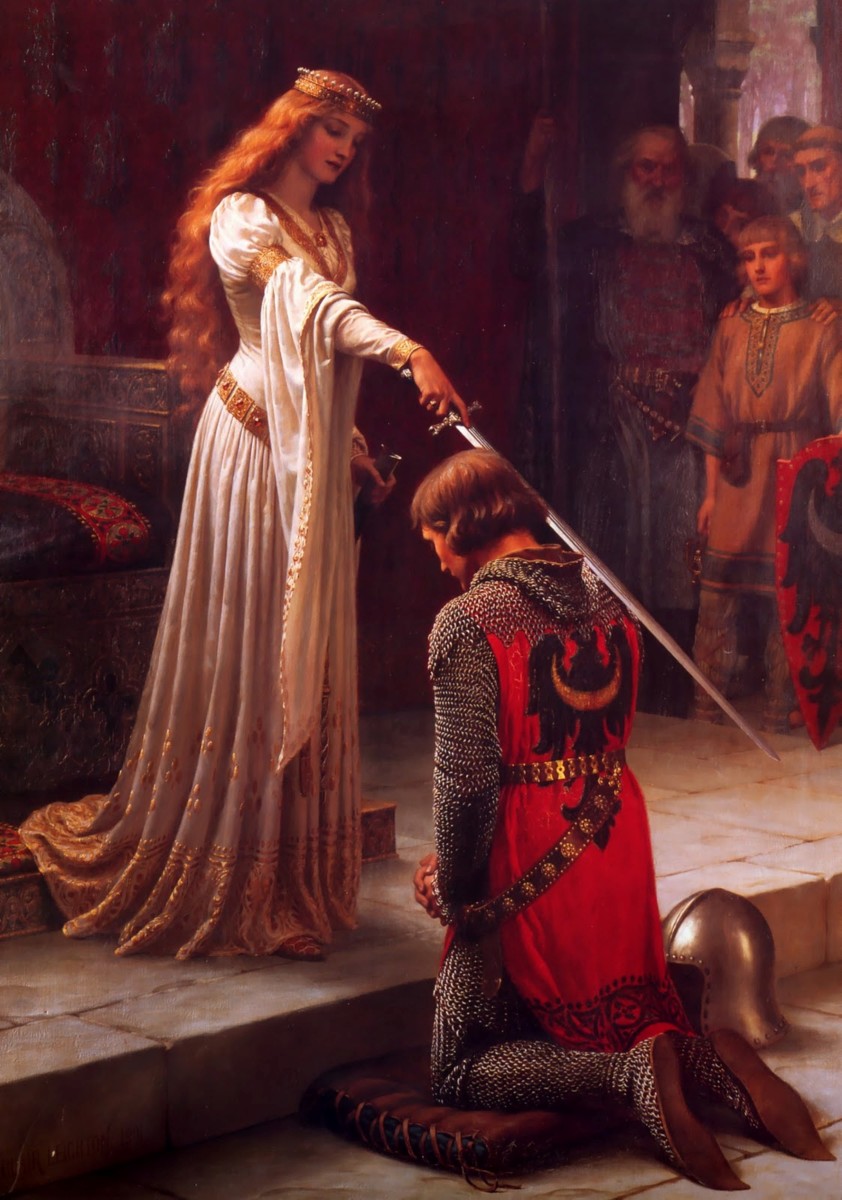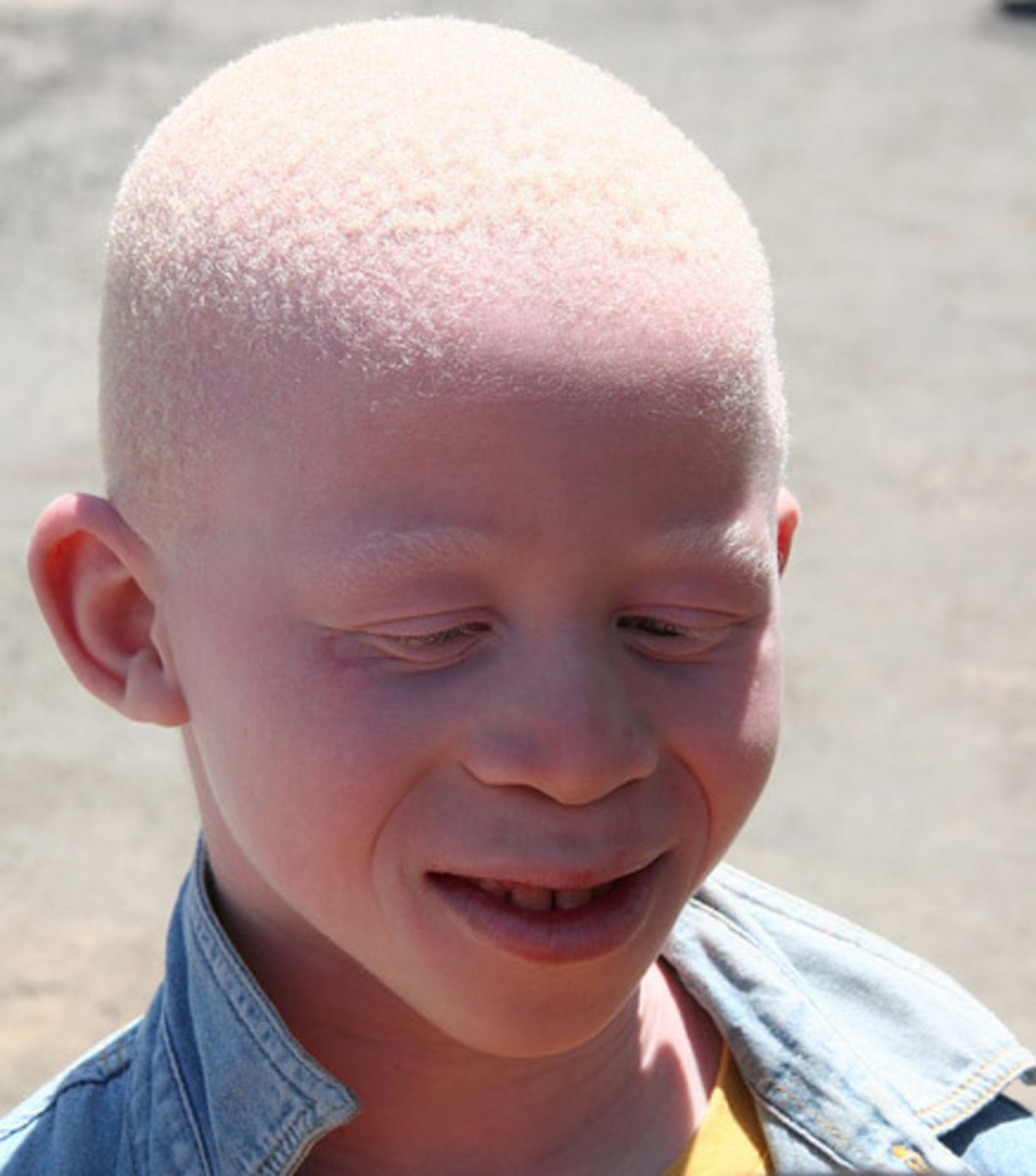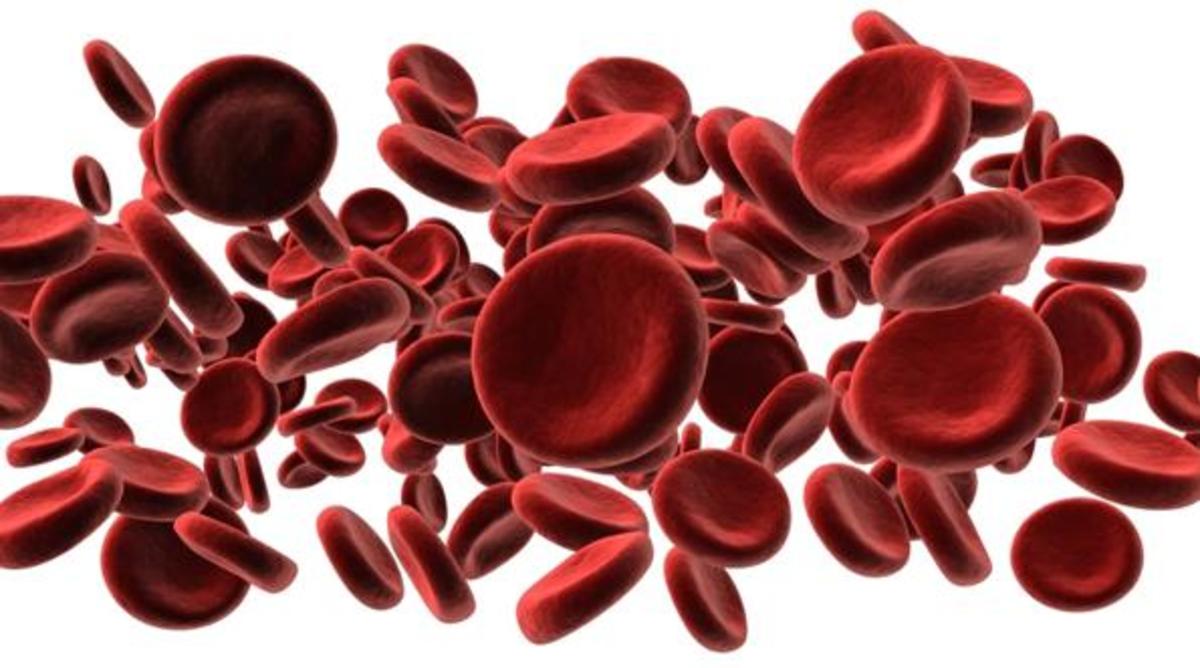Genetics - Meiosis
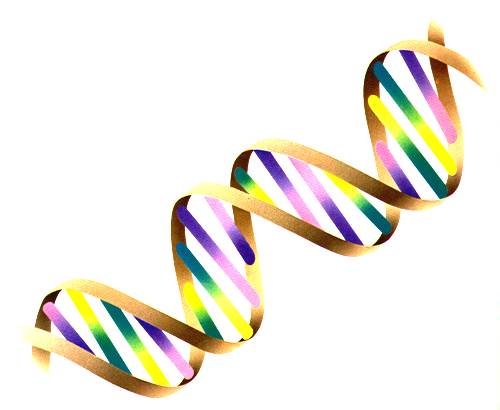
Definitions
Before reading the rest of this hub you should probably familiarise yourself with the following definitions as they will crop up quite a lot!
- Haploid - a single set of unpaired chromosomes in the nucleus of a cell (23 chromosomes).
- Diploid - a full set of chromosomes within the nucleus of a cell (46 chromosomes).
- Locus (loci) - the position of a gene on a chromosome.
- Maternal chromosomes - the chromosomes that were contributed by the egg.
- Paternal chromosomes - the chromosomes that were contributed by the sperm.
- Crossing over - when lengths of DNA 'cross over' from one chromatid to another.
- Chromatid - one copy of a duplicated chromosome which is joined to the other copy by a centromere.
- Allele - an alternative form of a gene that has a difference in the DNA base pairs and thus is translated into a slightly different polypeptide. The alleles are found at the same place on a chromosome.
- Chromatin - the material of which the chromosomes in eukaryotic organisms are composed (i.e. a combination of DNA and proteins).
- Bivalent - a pair of homologous chromosomes.
What is Meiosis?
Meiosis is a type of nuclear division necessary for sexual reproduction in eukaryotes, such as animals, plants and fungi. The process of meiosis happens in two separate divisions called meiosis I and meiosis II and each division has four stages. The end result of meiosis is four haploid cells.
Crossing over
At the chiasmata the chromosomes may break and the broken ends will rejoin to the other chromatid in the bivalent and results in similar sections of the chromatids being swapped over. The sections that are swapped contain the same genes but often have different alleles.
Meiosis I - Prophase I
At this stage the chromosomes have already been duplicated. It is during prophase I that the chromatin start to condense and undergo 'supercoiling' and as a result become shorter and thicker. At this point they can take up stain and can be seen under a light microscope. The chromosomes then come together and form a bivalent consisting of one maternal and one paternal chromosome. The chromosomes then wrap around each other and will attach at points called chiasmata which are the site that undergo the process of crossing over. The nucleolus then disappears and the nuclear envelope disintergrates. In the cytoplasm, a spindle, consisting of microtubules and other proteins, forms between the two pairs of centrioles and the centrioles will then migrate to opposite poles of the cell.
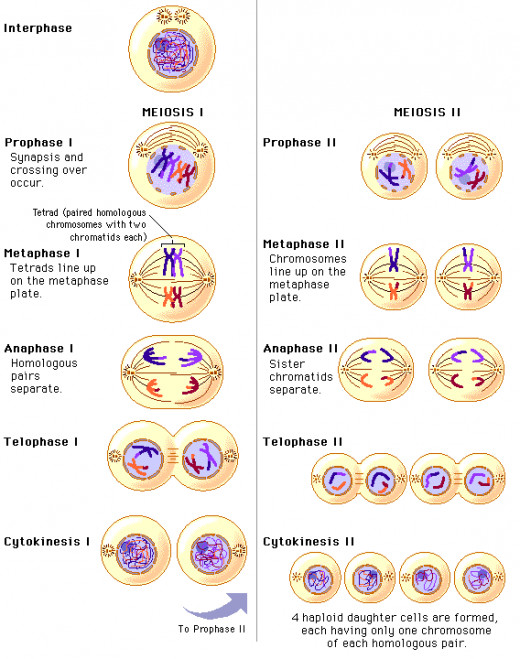
Metaphase I
The bivalents then line up across the equator, still attached to the spindle microtubules. The maternal and the paternal chromosomes in the bivalent are facing opposite poles of the cell which allows them to be pulled apart correctly during the next process.
Anaphase I
During this stage the maternal and paternal homologous chomosomes in each bivalent are pulled apart by the spindle microtubules to each pole of the cell. A key thing to remember about this process is the despite the fact the bivalents are separating the sister chromatids remain attached to one and other by the centromere.
Telophase I
The two homologous chromosomes have finished their migration to each pole of the cell. Two nuclear envelopes then form - one around each chromosome set. The cell then divides by a process called cytokinesis which involves the formation of a cleavage furrow which results in the 'pinching' of the cell into two cells. There is a brief interphase where the chromosomes uncoil.
Meiosis II - Prophase II
The following stages are much the same as the ones in meiosis I however the division takes place on a plane that is at right angles to the original divisions. In prophase I the reformed nuclear envelope breaks down and disintegrates and the nucleolus disappears. The chromosomes then once again condense and spindles form.
Metaphase II
Single chromosomes align themselves down the centre (equator) of the spindle and each of the chromatids is randomly arranged.
Anaphase II
The centromeres divide and the chromatids are pulled to the opposite end of the cells (poles) by the spindle fibres and the chromatids randomly segregate.
Telophase II
A nuclear envelope forms around each of the haploid daughter cells and cytokinesis takes place. This produces four gametes each with a haploid set of chromosomes.
Genetic Variation and Meiosis
There are many ways that meiosis and fertilisation can lead to genetic variation within a population. Crossing over (described above) is important because it means that every daughter chromosome is different from the parent ones and carries a new combination of alleles. This means that when the gametes join at fertilisation the resulting zygote is genetically different from the parent.
Genetic reassortment which is the consequence of the random distribution of maternal and paternal chromosomes on the equator in metaphase I and thee segregation of these bivalents into two daughter nuclei in anaphase I. The reassortment of chromatids also leads to genetic variation. In metaphase II the chromatids randomly distribute along the spindle equator and how they align determines how they will segregate in anaphase II.

